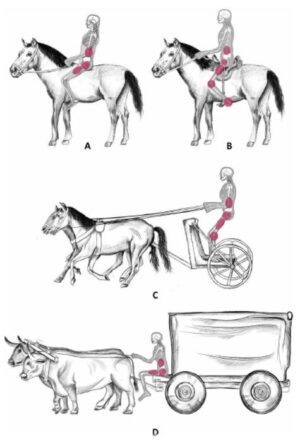
American Association for the Advancement of Science (AAAS)—A new Review contextualizes findings from a 2023 Science Advances study that presented what was possibly the earliest documented evidence of horseback riding by humans. The study described signs of “horsemanship syndrome” – or physical skeletal deformities in the lower body associated with biomechanical stress from prolonged horseback riding – in remains from Yamnaya pastoralists in Western Eurasia dating back to the early Bronze Age 4,500 to 5,000 years ago. Now, Lauren Hosek and colleagues question these results. They argue that horseback riding syndrome should be defined more holistically, looking for asymmetries and traces of inflammation-induced scarring across the whole skeleton instead of defining specific injuries as “smoking guns.” They note that no archaeozoological signs of riding in Yamnaya horse skeletal remains. Moreover, recent genomic analyses show little-to-no connection between Yamnaya horses and ancestors of modern domestic horses. For all investigations into early horse domestication, Hosek et al. underscore the importance of comparative datasets that help differentiate whether skeletal deformities come from horseback riding, chariot use, or other stressors.
___________________________

The posture and position of a human rider. Body areas of interest from Table 1 are highlighted in red for (A) horseback riding without stirrups, (B) horseback riding with saddle and stirrups; (C) horse, donkey, or hemione-driven chariot; and (D) cattle-drawn wagon (figure drawings produced by D. Chechushkova). Hosek et al., Sci. Adv. 10, eado9774 (2024)
___________________________
Article Source: AAAS news release.
*Tracing horseback riding and transport in the human skeleton, Science Advances, 20-Sep-2024. www.science.org/doi/10.1126/sciadv.ado9774
___________________________
Advertisement

EXPLORE THE ANCIENT ETRUSCANS IN PERSON!
Experience a unique, up-close-and-personal hike among ancient hilltop towns in central Italy. You will walk the sensational countryside of the regions of Umbria and Tuscany, soaking in important sites attesting to the advanced Etruscan civilization, forerunners of the ancient Romans; imposing architectural and cultural remains of Medieval Italy; local food and drink; and perhaps best of all — spectacular scenic views! Join us in this collaborative event for the trip of a lifetime!


